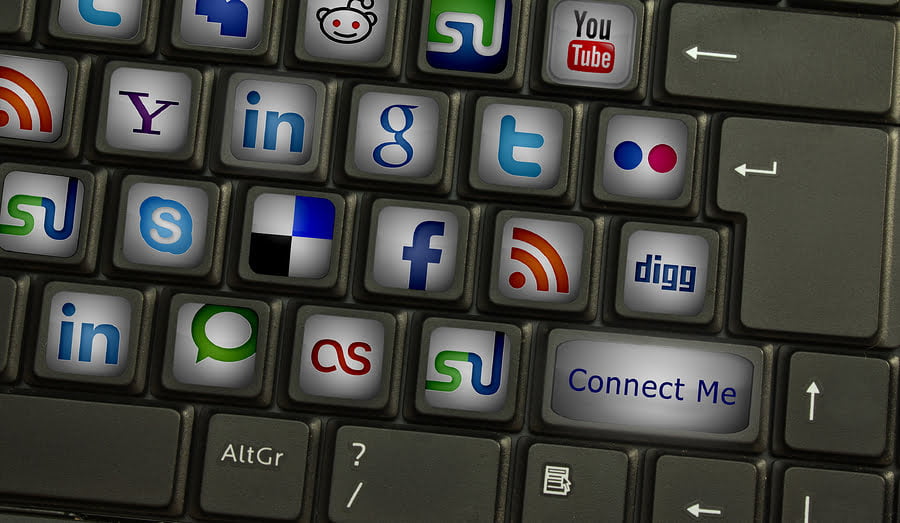Today’s teens and children are part of the first generation to grow up overwhelmed by technology, and more specifically, social media. There are social media sites used to connect on a personal level (Facebook, Twitter), share photos (Instagram), and even network, find jobs and compare careers (LinkedIn).
It’s undeniable that this generation is the first test group for the lasting effects of social media, but will these outcomes be positive or negative? The short answer? Probably a little of both.
We’ll explore some of the consequences — both good and bad — of this level of exposure to social media’s constant connectedness and how to address some of these consequences with the young people in your life.
What Is Social Media?
Social media is a blanket term used to encompass communities that use the internet to stay connected through to a larger network. Social media’s popularity started in the early 21st century, when Facebook was created, a site that has evolved with time and provided myriad benefits (and harms) to society that have been well-documented.
Today, there are countless options for social networks, with the leaders being Facebook, Twitter, Instagram, LinkedIn, and Snapchat. In short, there are enough options to keep everyone entertained and constantly connected with their social circle.
This is why compared to the generations before them at the same ages, we’re seeing a major increase in screen time among the younger generation: A Washington Post report finds that today’s teens spend an average of nine hours in front of a screen per day.
Generation Z: the Social Media Generation?
Millennials are regarded as the first generation to grow up surrounded by technology, but in a different sense than today’s youth.
When the average millennial (born between 1981 and 1996) was young, the internet was widespread, but not in the universal forms that it is today: for example, many members of this generation have memories of growing up dial-up internet, staying connected through instant messenger programs, which are like the single-celled ancestors of today’s social networks.
On the other hand, the earliest members of the next generation, Gen Z, started being born in the late 90s. With Facebook coming in 2004 and Twitter following several years later, many members of this age group were being exposed to social networks as soon as they could speak.
So here’s the situation. Today’s kids are on social media much more than prior generations at the same age, and we don’t yet have a complete picture of how social media affects their emotional and social development. The question here is are our children in danger?
How Social Media Affects Kids
The pros and cons of social media are clear. On the positive side, social media gives everyone in society access to information and collaboration that has never been possible before. On the negative side, sometimes constant access and collaboration can be abused. Especially if it’s used to falsely accuse or destroy someone’s reputation.
Replacing In-Person Socializing with Virtual Connectedness
Some fear that conversations with people they know (or don’t know, but that’s another issue) will replace real-life conversation with friends and peers for members of the “social media generation”. This is a real concern. Conversation through a messaging platform doesn’t build social skills as well as in-person contact, where participants have to read social cues and develop responses with less time to think.
Social Media’s Impact on Self-Esteem
Social networks’ involvement in the need to constantly compare oneself to others has been well-documented. A Huffington Post report uncovered some insights about the extent of social media’s effects on self-esteem with a survey of social media users:
- 60 percent of survey responses said that social media has negatively affected the user’s self-esteem
- 80 percent expressed that it’s easy to be deceived by things seen on social media
The rise of so-called “fake news” aside, these two responses are related, perhaps even more than individual survey respondents realize.
For example, social media profiles rarely show the low moments in a person’s life and social sites like Instagram and Snapchat are perfect examples. Many teens have a carefully curated presence on Instagram which allows them to put forth the image of a “perfect” life, one that is often far from reality.
This causes other teens to constantly compare themselves to this unrealistic standard of what life should be. This causes a drop in self-esteem in both parties. The person with the “perfect” profile may be frustrated that their online presence doesn’t match their real life, and others may be worried about their ability to stack up in social circles.
It’s Not All Negative
On the other side of the coin, many actual social media users actually refute the idea that social media is harming their social development or creating an impossible standard for their lives. A Washington Post study found that the majority of teens surveyed say they benefit more from social media than they’re harmed by it.
Social Media and Bullying
But when we come to the point where socializing and self-esteem intersect, we see one of the largest dangers of letting children roam freely on social media: cyberbullying.
This is a phenomenon in which people feel overly confident by the protection they get from being behind a screen and are more aggressive than they would be in person. Cyberbullying can occur between peers within the same social circles are complete strangers on message boards and groups within social media platforms.
The same way we’ve known for a long time that bullying damages our children’s psyche, cyberbullying has the same outcomes, if not even more severe. A study from the UK makes the claim that cyberbullying makes young people twice as likely to engage in self-harm or suicide.
In the past, bullying was a matter handled by school and community leaders, and in theory, offenders were forced to stop their harassment by local authorities but bullying on social media is less clear-cut. Often, legal procedures have to be used to bring the offenders to justice.
What Can You Do About Cyberbullying?
Let’s face it, no child should have to grow up with low-self esteem. The impact of low-self esteem can have far reaching consequences that affect all areas of a child’s life. Fortunately, cyberbullying can be a form of harassment, which carries criminal penalties. However, since cyberbullying is an intentional act, most insurance policies exclude intentional acts from their coverage. So unless the cyberbully is independently wealthy and the owner of valuable property which may be attached by a judgment, a civil suit could cost more than you would ever be able to recover.
Regardless, you always have the option to bring your case to the legal system. For more advice, you need an experienced attorney to walk you through the steps to take to bring a bully to justice.
Need a case review? Contact the Brown Law Firm and get your questions answered today.
Ready To Speak With An Attorney?
Get your case evaluated by a real attorney at no cost to you.

